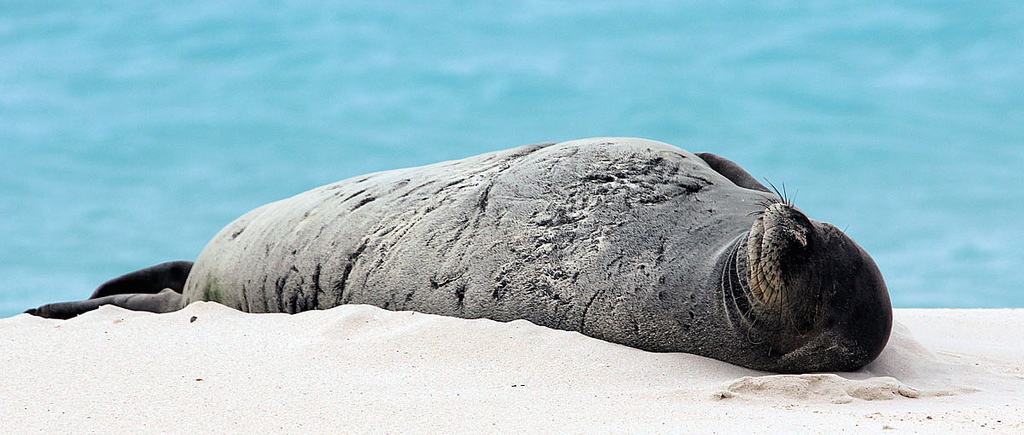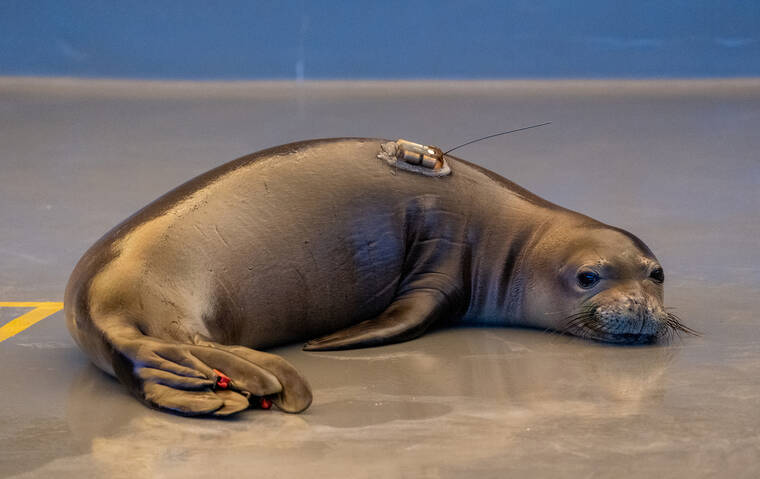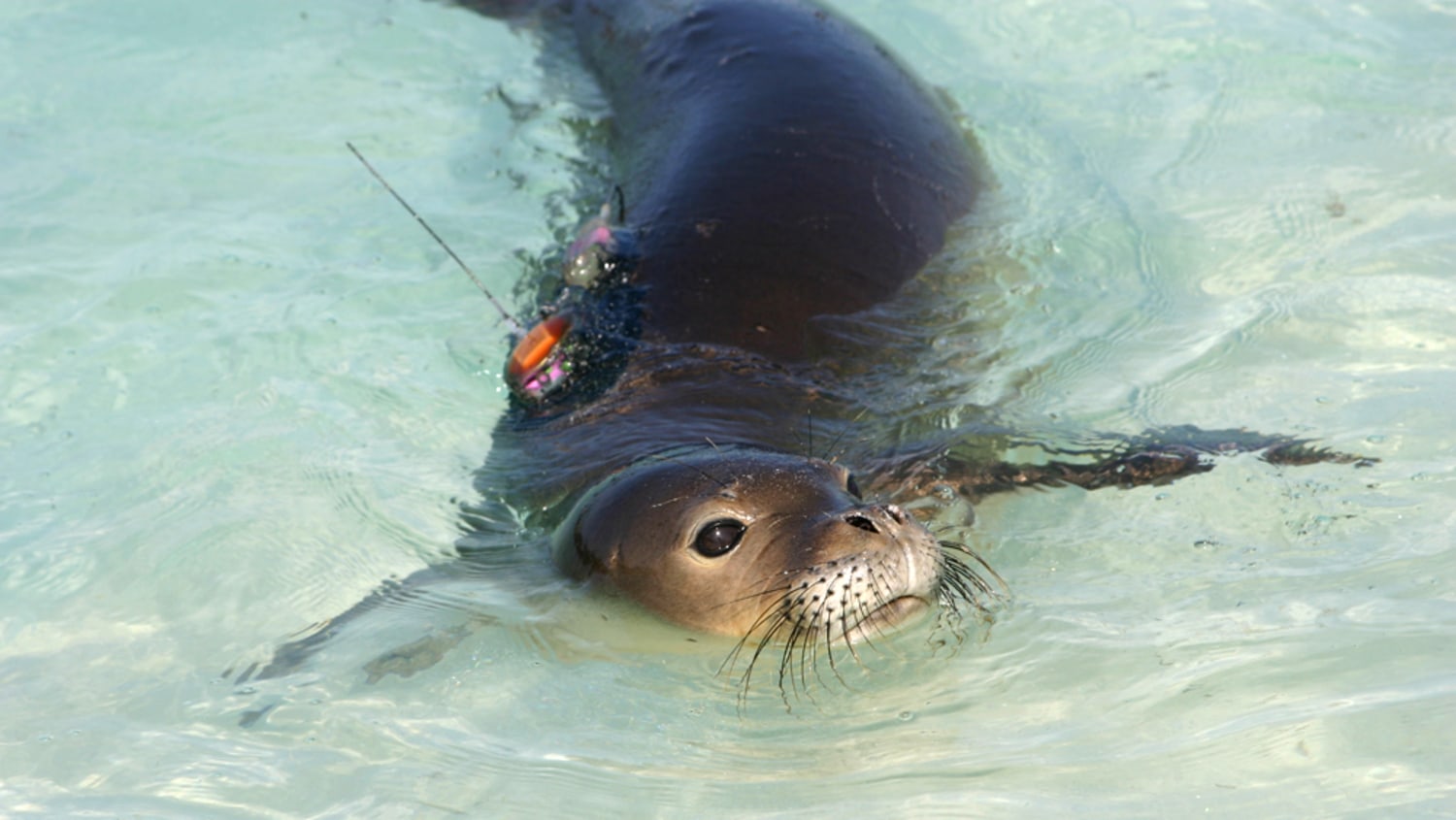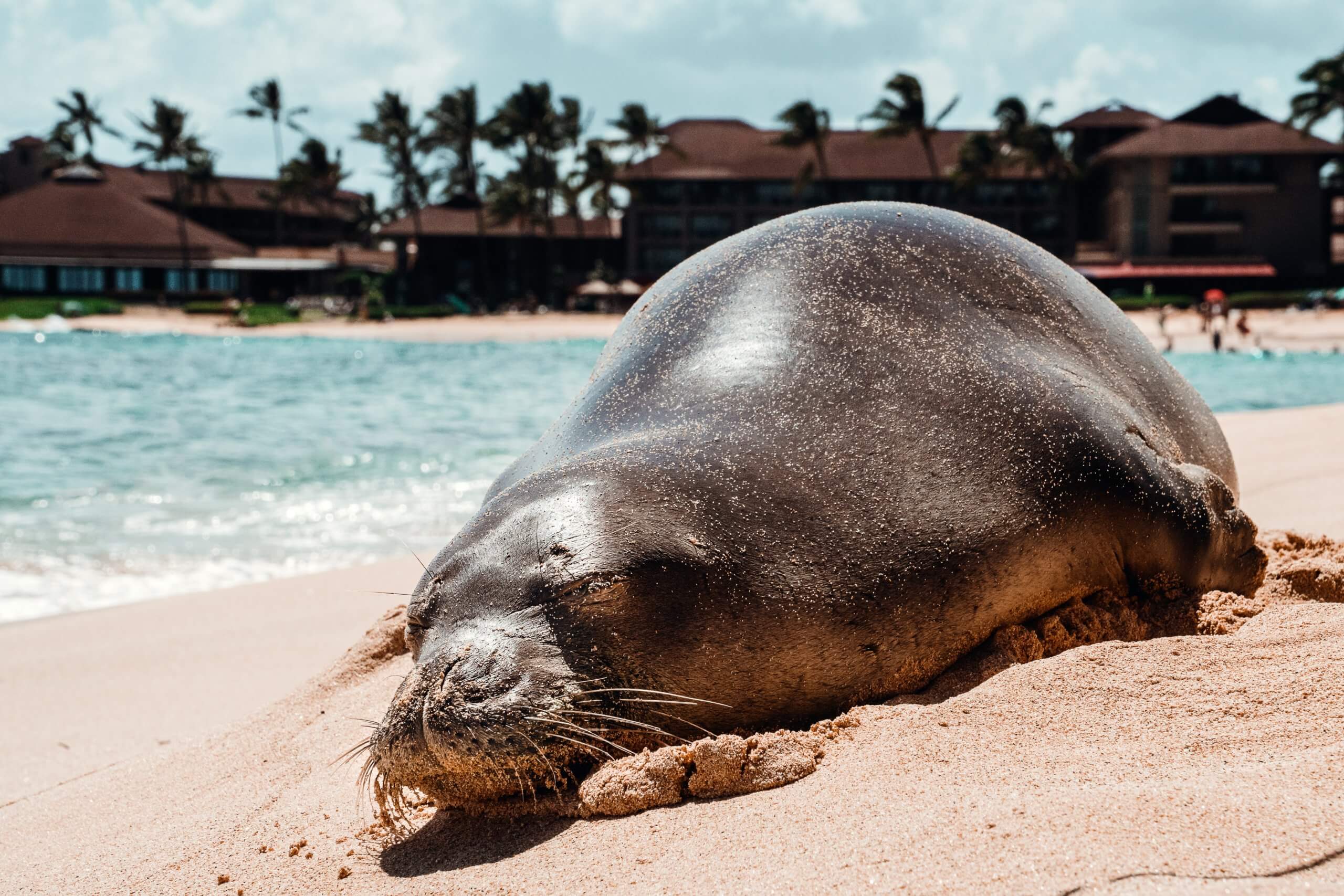Hawaiian monk seals are a critically endangered species, with only around 1,400 individuals remaining in the wild. These seals are found only in the Hawaiian Islands and are an important part of the state's natural history and cultural identity. However, they face a number of threats to their survival, including habitat loss, entanglement in fishing gear, and interactions with humans. Conservation efforts are therefore essential to protect and preserve this unique species.
One of the main challenges facing Hawaiian monk seals is habitat loss. These seals rely on shallow, sandy areas for breeding and resting, but many of these habitats have been lost or degraded due to coastal development and other human activities. To address this issue, conservation organizations and government agencies have worked to protect and restore critical habitat areas, including establishing marine protected areas and working with local communities to reduce human impacts on the seals' habitats.
Another major threat to Hawaiian monk seals is entanglement in fishing gear, particularly abandoned or lost nets and lines. These can entrap and injure the seals, leading to death or serious injury. To reduce this threat, conservation organizations and government agencies have implemented a number of measures, including educating fishermen on how to properly dispose of their gear and working with the fishing industry to design gear that is less likely to entangle seals. In addition, response teams are trained to quickly remove any gear that does entangle seals, which can help to save their lives.
Human interactions can also be a problem for Hawaiian monk seals, as they are often attracted to areas where there are people, such as beaches and harbors. This can lead to conflicts with humans, as seals may be perceived as a nuisance or threat. To address this issue, conservation organizations and government agencies have implemented educational programs to teach people about the importance of respecting and protecting the seals. In addition, efforts are being made to reduce the seals' reliance on human-populated areas by improving their habitat and providing alternative resting and breeding sites.
Overall, there are a number of efforts underway to protect and conserve Hawaiian monk seals. These include habitat protection and restoration, reducing entanglement in fishing gear, and reducing conflicts with humans. While these efforts are making a positive impact, more work needs to be done to ensure the long-term survival of this critically endangered species. By continuing to support and invest in conservation efforts, we can help to ensure that Hawaiian monk seals continue to thrive in the Hawaiian Islands for generations to come.
Hawaiian Monk Seals » Marine Conservation Institute

Habitat loss and rising sea levels also pose a threat to these animals. The overall population is declining, but the increase in the main Hawaiian Islands is promising for the future of the species. The Act protects all marine mammals within United States waters from harassment, hunting, capturing, collection, and killing as well as insure the formalization of the marine mammal health and stranding response program. The Monk Seal populations were hit so hard that they have yet to make a significant recovery. Unfortunately, humans have a large effect on the restricted Monk Seal populations as well. Given the high risk, a first-of-its-kind vaccination protocol has been undertaken to be proactive in protecting this endangered species from harm.
Hawaiian Monk Seal Facts: Habitat, Diet, Conservation, & More

The Endangered Species Act protects endangered and threatened species by prohibiting the importation, exportation, possession, sale, or transportation of any endangered or threatened species as well as destruction of any land inhabited by the species THE EFFECTS OF HUMAN INTERACTIONS Due to the fact that the Hawaiian Monk Seal occupies a very restricted range of habitat and the population size is minimal, there is little being done outside of their natural habitat. The aquarium is a University of Hawaiʻi at Mānoa research facility. These seals have been in captivity since they were juveniles, and cannot be released into the wild due to their limited eye sight Khon2, 2015. There are still marine mammals like Droplet at our hospital right now that need your help. In addition to supervision, another effort being made to revive the Hawaiian Monk Seals is the Marine Mammal Center's Ke Kai Ola hospital.
Waikīkī Aquarium partnership supports monk seal conservation research

There are several different classifications that explain the population status of species: least concern, near threatened, vulnerable, endangered, critically endangered, extinct in the wild, and extinct Monachus Schauinslandi. Specifically speaking of the lobster industry, they have caused a massive decline in the crustacean population , causing the Hawaiian Monk Seal to have a limited food source. By claiming the Hawaiian Monk Seal as their state animal, Hawaii attached a sense of responsibility and pride to help further inspire the public to save the seal as well as raise awareness towards the fragile state of the species. This also means that they help keep numerous populations under control by feeding on them. Facebook Twitter Reddit Pinterest Email Hawaiian Monk Seals, as cute as they are, serve a higher purpose than just putting smiles on the faces of passerby people. Multiple agencies have participated in planning vaccination and quarantine requirements, including those related to COVID-19, to ensure the health and safety of people and animals.
The Marine Mammal Center

Maternal separation contributes to this, as seal pups often fail to provide for themselves early on. Today, the Hawaiian monk seal is critically endangered and headed toward extinction. It is important to keep human interactions to a minimum, for the sake of the seals, but to have the helpful buffer zone of the scientists standing by, ensures the safety and protection of the younger seals. Or by visiting our main store at shop. In Hawaiʻi, where the islands are very low lying, endangered Hawaiian monk seals have already lost an estimated 50 percent of their historic breeding beaches to rising seas. Hawaiian monk seals are one of three species of monk seals. This is going to be a long-term struggle to ensure this ancient, Hawaiian endemic native species has the resources it needs to survive.
Why Are Hawaiian Monk Seals Important?

As a result, such species are particularly susceptible to impacts such as disease or loss of habitat. Only five Hawaiian Monk Seals are found outside of their habitat of the Hawaiian Islands and are in captivity. They also are usually found sleeping on the Hawaiian Island Beaches or in underwater caves, sometimes for days at a time Protected Resources Division. Do I choose the ones that are most likely to be successful, or the ones that people care the most about, or the ones that maybe are going to have the biggest roles in ecosystems, or the ones that will be cheapest? Keeping your distance is for their safety — and your safety! Most Hawaiian monk seals can be found around the NWHI in the Papahānaumokuākea Marine National Monument, but a small and growing number now live in the main Hawaiian Islands. However, with more seals in the human populated islands of the Hawaiian Islands, more people will interact with the seal.







